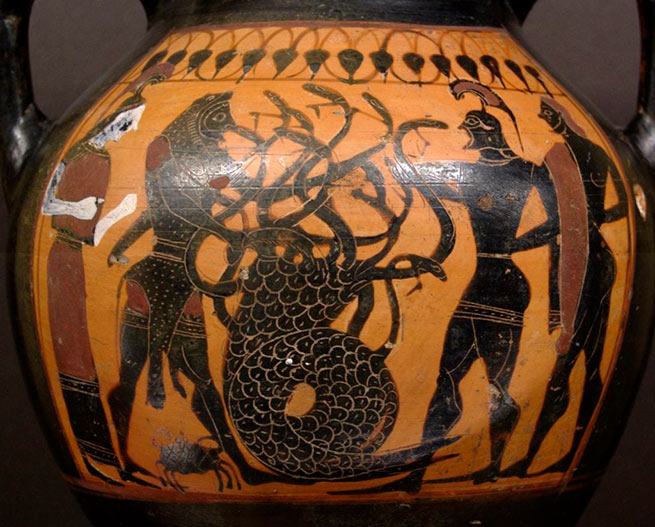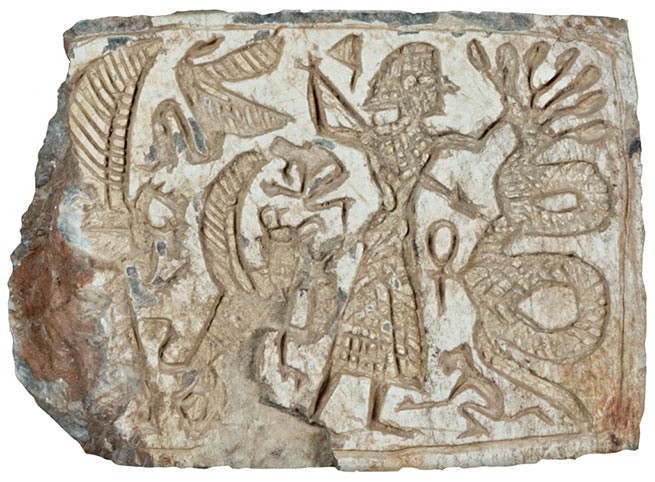Excavations in Israel have unearthed a tiny miniature that is believed to be crucial to explaining a common pattern found in many ancient cultures and mythologies.
Archaeologists consider it a link connecting the religious histories of many peoples
The artifact, discovered in 2022 during archaeological excavations in the northern Israeli city of Hazor, is a seal that was dipped in paint and used to engrave an image onto clay or sealing wax, and measures just 3.8 centimeters in length.
Christoph Welinger, professor of comparative religion at the University of Zurich, in an article in the journal Near Eastern Archaeology, considers the archaeological find “the missing link” connecting a common motif in Greek mythology and the Bible.
The sculpture depicts a man with a spear fighting a seven-headed serpent standing upright. Behind the hero are depicted the mythical creature griffin, uraeus, the ancient Egyptian symbol of the power of the pharaoh in the form of a snake, and a scarab. The presence of mythical creatures emphasizes the transcendental nature of the scene, Welchinger notes. Also depicted are two sitting monkeys, the ancient Egyptian symbol Ankh and another symbol that could not be deciphered. The work is believed to have been created by an Israelite or Phoenician and dates back to the Iron Age (c. 840-732 BC).
The motif of the hero’s struggle with the seven-headed serpent dates back to the third millennium BC in Mesopotamia
Around the middle of the second millennium BC, this motif migrated to the northern coast of Syria, and then found its way into the Hebrew Bible, where Yahweh fights leviathan. It also appears in the Christian Bible, where a dragon-like monster fights an angel in the Revelation of John the Evangelist.

This motif is also depicted on a Greek vase dating from around 540 BC. e., where Hercules and Iolaus fight the Lernaean Hydra. The repetition of this motif in such distant places and time has interested scientists. Seal of Khazor “provides a tangible connection between Phenicia and Israel”, Wellinger told McClatchy News:
“Phoenician academics and scholars probably preserved and transmitted a tradition inherited from the ancient Syrian city-state of Ugarit at the end of the Bronze Age.”
Wellinger names the find “impressive” and explains that she “occupies a special place in the unknown history of the transmission of myths.” Future researchers will have to figure out exactly how this image came to the West and became associated with the character of Hercules.







More Stories
Making a mockery of the Acropolis for the sake of tourism
How Plato spent his last night – what the found papyri showed
Eurovision 2024: the first rehearsal of Marina Satti in Malmö has ended